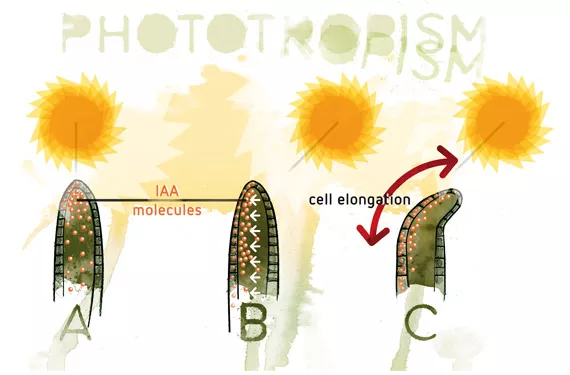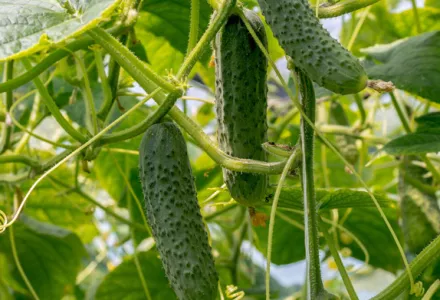Plant growth regulators are molecules that influence the development of plants and are generally active at very low concentrations. There are natural regulators, which are produced by the plant itself, and also synthetic regulators; those found naturally in plants are called phytohormones or plant hormones.
Substances considered phytohormones include auxins, gibberelins, cytokinins, abscisic acid and ethylene, and more recently brassinosteroids, salicylic acid, jasmonates, systemin, polyamines, nitric oxide and signal peptides. In this article We take a closer look at auxins
There are differences between plant and animal hormones. For example, animal hormones are synthesized in particular organs or tissues, and by definition they act in different places to where they are produced. This is not necessarily true for phytohormones; some exert their action in exactly the smame place where they are synthesized.
Although all phytohormones have their own specific effects, their combination produces a varied response in plants.

Auxins
The main effect of auxins is to cause cell elongation, mainly due to the alteration of cell wall plasticity. Auxins are synthesized in the apical meristems and to a lesser degree in the roots. The main auxin to be synthesized naturally by plants is indole acetic acid (IAA), although others have been found such as phenylacetic acid, the chlorindoles and, more recently, indole butyric acid (IBA).
The movement of these phytohormones is from the apices to the roots (basipetal) and vice versa (acropetal). However, basipetal movement is much more rapid than acropetal movement
Some of the effects of auxins in plants include:
Apical dominance. It is well known among growers that when one eliminates the main apical axis (main vertical stem) of a plant, secondary apices will begin to grow and several of these will go on to form main stems. This occurs because the auxins produced by the apical meristem suppresses the growth and development of secondary buds.
Rhizogenesis. Auxins are the main components responsible for the formation of root cells. This property is used by gardeners to produce cuttings: applying auxins to the base of the cut promotes the formation of new roots. This rhizogenesis occurs at very low concentrations of auxins, since higher concentrations of auxins suppress root growth and development. However, it is the presence of other phytohormones that determines whether the new cells become roots or other organs. The balance between auxins and cytokinins plays a very important role in this process. Thus when plant cells are grown in vitro in culture media, if the concentration of auxins is greater than that of cytokinins, new roots will be formed. However, if the concentration of cytokinins is greater than that of auxins, the cells will eventually develop into new buds. When the concentration of the two hormone types is similar, cell growth will occur without differentiation, forming a mass of developing cells called a callus.
Geotropism. Gravity exerts an effect on plant development. When a plant stem is placed in a horizontal position, lateral buds will begin to develop and may form roots in the zone which is in contact with the soil. This is due to the accumulation of auxins due to the effect of gravity. This phenomenon is used to obtain new plants using a technique called layering.
Phototropism. Plants tend to grow towards the light. This process is regulated by auxins, which accumulate in parts that receive less light; this results in the elongation of the cells in this zone and makes the stem curve towards the light. Further reading in: The effect of light spectrum on plant development.
Regulation of abscission. Abscission is the shedding of some parts of the plant. In many cases the cause is the aging of the plant tissue, called senescence. The exogenous application of auxins will reduce abscission in many species.




